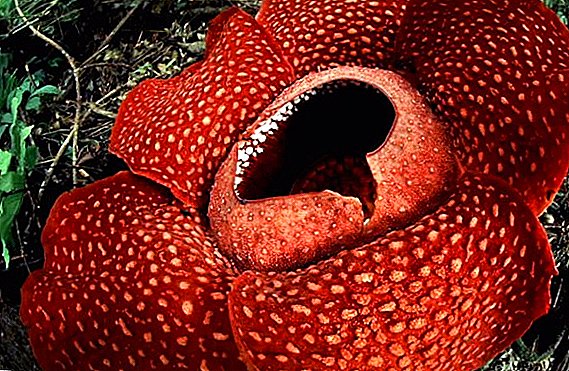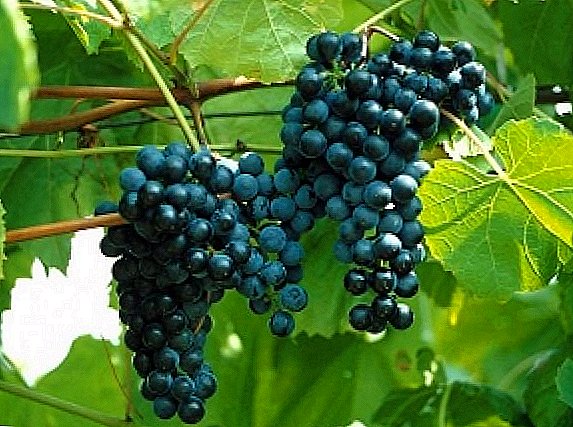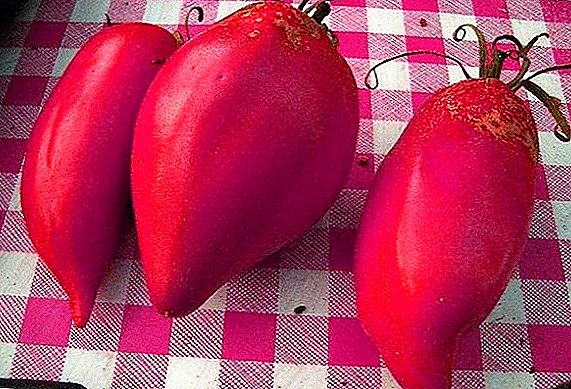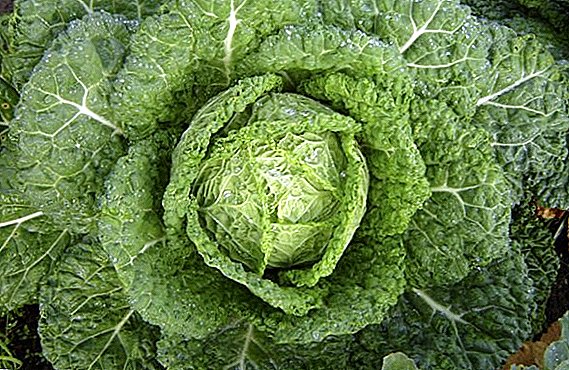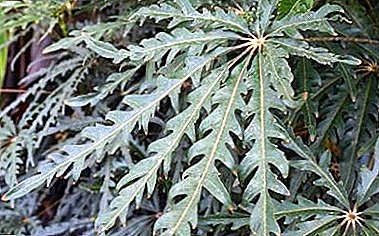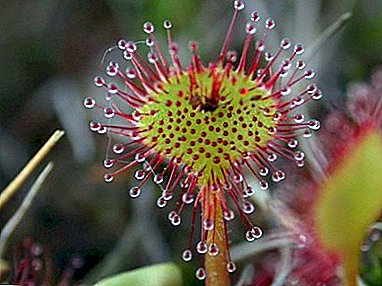
Rosyanka - what is it? Beautiful flowering plant. It feeds on insects, can grow on scanty marshy soils.
It hibernates in the forest moss, annually sheds shoots that perefabatyvayutsya in peat. Propagated by seeds and rosettes.
Description of a predatory plant
Plant shoots annuals. They grow from the forest moss itself. In shape they are elongated, thin, elegant. On moss is leaflet outlet. They are tightly pressed to the ground.
One sundew contains 10-12 leaves. The leaves are miniature. In diameter reach no more than 1 cm. They are located on elongated petioles. The length of the stem is 4-7 cm.
Depending on the subspecies, leaves may be emerald or burgundy. On the leaves grow thin hair burgundy shade. At the edges of the hairs are small droplets of liquid. Due to enzymes dew attracts a large number of insects.
Sundew is an insectivorous perennial. Latin name: Drosera. Informal titles: God's dewdrop, the eyes of the princess, sunny dewdrop, Rosychka. The plant contains a sticky substance that leaves produce.
Thanks to the drooping droplets of this liquid, similar to dew, it received such a name. The substance contains konyin alkaloid and various digestive enzymes. Thanks to him, insects falling into the trap instantly paralyzed. This is a predatory plant with external digestion.
After ant, fly or other insect was caught by the plant, the edges of the leaves are instantly closed. If the insect is small, it can crawl out of the gap. Large insects are covered entirely.
Flower habitat on the marshland. The number of plants is significantly reduced, due to human intervention in the wild.
In the gallery you can see how it looks in the photo:





Wintering period
In the cold season on the plant appear wintering buds. As they grow, they go deep into the forest moss. If you come to the marshland, where the sundew grows after frost, it will be impossible to see this plant. Rosyanka will completely hidden under the forest moss.
Due to this mode of growth, the moss protects the flower from frost, and the sundew successfully survives the cold.
In spring, when the temperature becomes stable and the first sun appears, the first shoots grow from the wintering buds of this representative flora.
Bloom
Bloom later - in the middle of summer. Pollinating plants occurs insects. But they risk falling into the trap of a flower. Therefore, flowering shoots, on which flowers are located, reach a maximum length of 25-30 cm.
On each peduncle above bloom miniature flowers. They have a white or pale pink color. Inflorescences are collected in tassels or beautiful curls. Each flower contains 5 petals.
Against the backdrop of a gloomy swamp, they look like beautiful "clouds". Endowed sweet nectaries.
Home care
Growing from seed
 In place of flowers in late summer - early autumn grow fruit. They are self-opening. Open with three doors. Inside the fruit are miniature seeds.
In place of flowers in late summer - early autumn grow fruit. They are self-opening. Open with three doors. Inside the fruit are miniature seeds.
Seed form: spindle-shaped. Seeds can be seen in the photo in the article. In early autumn, they spill onto the surface of forest moss. After that, they are buried in the soil surface. Growth occurs in the spring to next year.
When growing in gardens, the plant must be provided lots of moss. Otherwise, the procedure for growing the sundew from seeds will be meaningless.
What eats a plant?
Leaflets emerald hue. They contain a large amount of pigmented chlorophyll. Thanks to this substance, photosynthesis occurs.
In the video, the sundew caught a spider:
Therefore, the plant can provide itself with nutrients. But since the plant grows in swampy areas, the soil in this environment is very scarce and not rich in minerals. To get the required amount of nutrients, the plant has become catch insects.
 Vitamins found in ants and flies help sundew survive in such a swampy area. The sundew feeds on small bugs, spiders, ants, flies, mosquitoes and even dragonflies.
Vitamins found in ants and flies help sundew survive in such a swampy area. The sundew feeds on small bugs, spiders, ants, flies, mosquitoes and even dragonflies.
Soil
Can grow on any kind of soil. With artificial growth requires coverage of forest moss. Moss height must be more than 3 cm.
As shoots die off every yearthey turn into recycled peat material. Due to their large number, as well as forest sphagnum, oxygen does not flow to the root system.
Due to this fact, the sundew annually raises its roots to the surface of the soil. At home, the sundew is planted in poor substrateconsisting of coarse sea sand and peat.
Watering
Water the plant with a special bottom or bottom irrigation. To do this, a container with a flower put on a bowl with water.
Attention! Spray the sundew is prohibited.
 On the leaves of the flower are small villi. If they are constantly in a moist state, then they will be washed off the sticky liquid, which is so necessary for the plant.
On the leaves of the flower are small villi. If they are constantly in a moist state, then they will be washed off the sticky liquid, which is so necessary for the plant.
In this case, the sundew will not be able to get food and may die.
Transfer
The plant is low in soil. Rosyanka can grow in any land. Transplantation is carried out only if the soil is very swampy.
Temperature
Summer temperature should be within 19-21 ° C. Can endure cold in winter 5-12 ° C. Since in winter the plant hides under the moss, warm winters can be detrimental to it.
For tropical subspecies, the summer temperature should be between 24-32 ° C. Winter 16-19 ° С.
Breeding rosettes
Sockets cut from the parent plant. Rooted in water and planted in a moist substrate.
- Venus flytrap.
- Darlingtonia Californian.
- Nepentes.
- Sarracenia.
Plant species
At the moment, we know a little more 150 subspecies of this predatory flower. The most famous subspecies:
- Round leaf - grows in the swamps of the temperate zone. Latin name: Drosera rotundifolia. The leaves are oval, grow on elongated petioles. In diameter reach no more than 2 cm. Looks like miniature plates. The upper part of the leaves has villi.

- Cape - the most beautiful of all subspecies. Latin name: Drosera capensis. Endowed with very short branches. The leaves are graceful, thin. Grow on elongated petioles. Coloring leaves of emerald-amber or maroon-brown. Cilia maroon plants. After the insect is trapped, the leaves of the plant curl into a small roll. The plant is endowed with beautiful flowers.
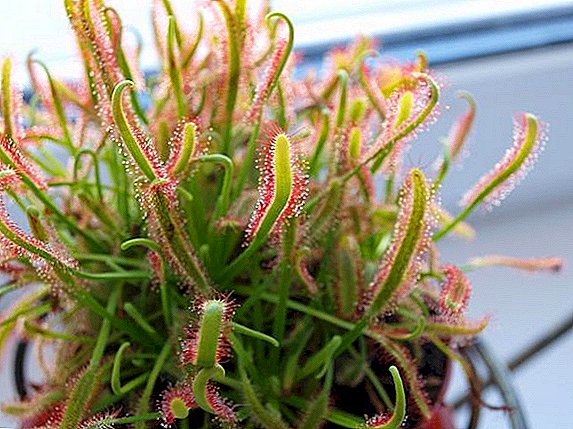
- Intermediate - the rarest subspecies.

- Long leaf - has narrow, elongated leaves. It grows in swamps and overgrown rivers. Sometimes it is called "English".

Read more about species of predatory plants in our article.
Benefit and harm
Processed leaves of sundew are used in folk techniques. With the help of them get rid from warts, papillomas, small scars.
Infused flower juice is consumed as diuretic and diaphoretic. Many extreme bury infusion of sundews in the eyes and drink with fevers. Is an antibacterial agent.
 The composition includes malic, benzoic and citric acid. The plant is rich in vitamin C.
The composition includes malic, benzoic and citric acid. The plant is rich in vitamin C.
The flower contains calcium, tannins and potassium salts. It also contains droserone and plumbagin. Also Italian Rosiere liqueur is made from sundew.
Diseases and pests of a predator
Plant not affected by pests. The sundew can only be sick if the root system is overwetted. Must not be allowed in the tank water insisted.
Sundew - a predatory plant. It grows in a warm climate, can tolerate Russian cold. It grows well near the forest moss. Pests are not affected. Recommended to amateur growers.






